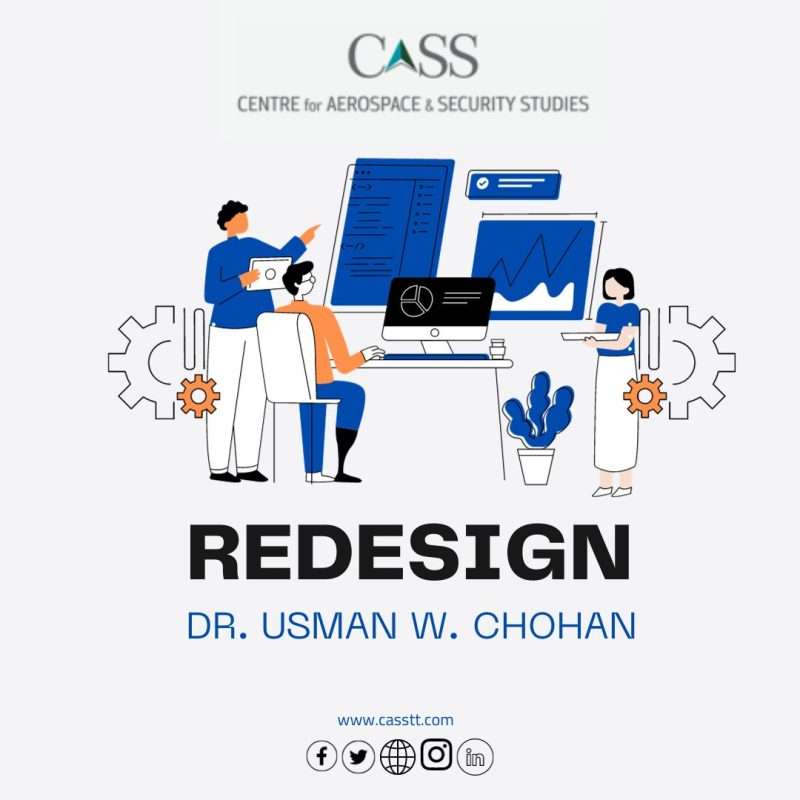At a recent conference, I took the opportunity during my remarks to posit the term ‘redesign’ as a discursive element that should inform our engagement with society. This differs from the standard refrain of ‘reform’ that many economists and policy pundits employ. Reform is a standard-issue term that is useful insofar as it points to reshaping or remedying existing deficiencies, and it is also a term that duly denotes criticism of existing failures. However, there are five shortcomings of reform that are instead better captured by ‘redesign’ and can thus be framed as the ‘advantages of a redesign approach.’
The first is that ‘redesign’ is a comprehensive process, in the sense of deploying a holistic, totalising perspective on remaking society. Redesign involves fitting better parts within a larger whole and thus is mindful of how all of the moving parts of the economy, and of society, fit together in a larger sense. This comprehensive approach of redesign is different from that of ‘reform’ which tend to be concentrated, especially in our experience, to a narrow domain, without heed to the wider picture. Hence, even when reforms are undertaken, they have side-effects that may be deleterious elsewhere.
The second is that ‘redesign’ is an imaginative process. It seeks out-of-the-box solutions to contemporary problems and urges us to step outside our comfort zones to conceive of new and more suitable designs. Reform, by contrast, asks for turning one condition into another, with both known quantities albeit with unknown side-effects. Redesign is, therefore, a much more potent driver for ingenuity and innovative thinking. When we seek to redesign things, we are much more empowered to extend, bend, reconceive, replace, insert, and morph the moving parts towards a more optimal design configuration. Thus, ‘redesign’ requires an open mind, whereas ‘reform’ may not.
The third is that redesign is a collaborative process. It involves stakeholders from across society, akin to those in the public value framework, to work in unison towards the co-creation of value. This collaborative process of redesign involves inputs from a variety of experts towards optimisation, as well as non-experts towards democratisation, so that new iterations of objects and ideas may come about that serve the wider goals of value creation. By contrast, reforms are a top-down process, given from-on-high with the object of serving a set of agendas that may or may not involve collaborative decision-making at any juncture. Reforms are, in fact, often a carefully guarded preserve, and thus do not have the adequate representational features of a truly collaborative effort. This is why redesign’s notion of collaboration is more robust.
The fourth advantage is that ‘redesign’ is a positive process, harkening to the need for an upbeat and constructive mindset to seek out the betterment of society through the optimisation of its elements. In other words, redesign is positive, in that participating agents are seeking out better designs of the elements. By contrast, reform is an inherently negative concept, in that it seeks to identify a mistake, and rectify that mistake through forceful change. Reforms are, thus, targeted towards error and may offer alternate errors in exchange. The discourse around reforms is inherently dissipative of energy for this reason, as it seeks remedial action for a distortionary condition, even when disagreement may exist around the nature or extent of the reforms required. ‘Redesign’, by contrast, employs the mindset that there is always room for improvement, and by striving for better solutions, we can take steps in the right direction. This is an unquestionably more positive approach than a reform-based one.
The fifth advantage is that ‘redesign’ is a continuous process. One cannot go through a single iteration and be satisfied with the outcome, especially when it comes to a dynamic and nebulous concept such as the ‘economy’ or ‘society.’ Instead, redesign is a continuous feature, embedded within an iterative paradigm of improvement through a series of iterations. By contrast, reforms are remedial actions that occur whenever the problem grows too big, and then they are implemented with a view to rectification, but without a necessary recognition of the continual nature of change in the underlying variable. Therefore, redesign is superior insofar as it grasps the iterative nature of improvement through a series of design alterations that continues towards optimisations.
Given the aforementioned reasons, it may not be surprising that ‘redesign’ tends also to appeal towards younger audiences, bereft of power but endowed with creativity, whereas ‘reform’ is a stalwart terminology for those who have power but lack creativity. In fact, reform often is used as either a bête noire for obfuscation or as a foil for masking either partial action or an altogether lack of action on substantive issues. Many have lost heart with the concept of ‘reform’, some even dismissing them as ‘deforms’ with low expectations. ‘Redesign’ can also, of course, fall short of the promise, and even deliver the wrong solution, but its sensibility is profoundly different from that held by reformists. I believe there is more promise in seeking to ‘redesign’ the world around us, and indeed to ‘redesign’ ourselves as individuals and as a collective.
Dr Usman W. Chohan is Advisor (Economic Affairs and National Development) at the Centre for Aerospace & Security Studies, Islamabad, Pakistan. He can be reached at cass.thinkers@casstt.com.




